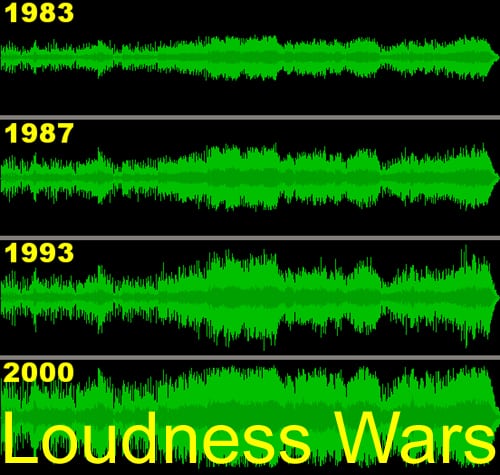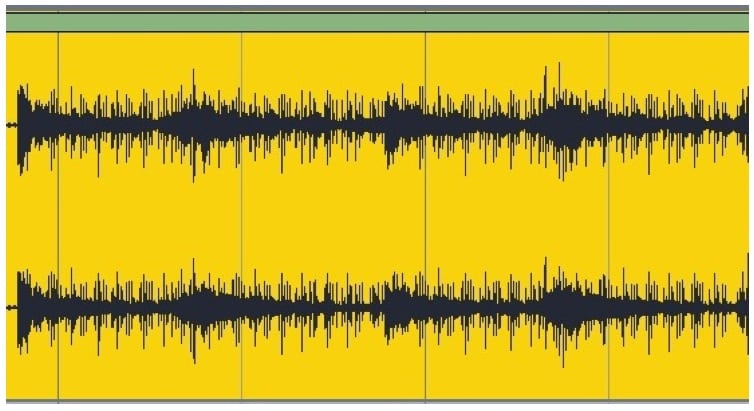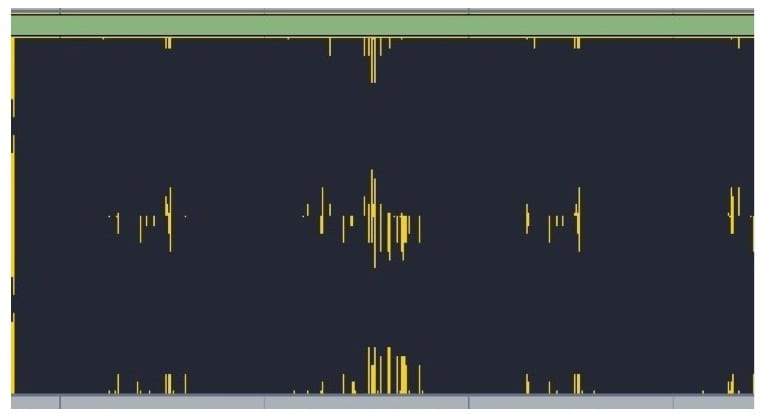We have learnt that You, our audience, comprises of a very broad range of musicians and music lovers, from seasoned professionals, to those just beginning to exercise their passions and wanting to learn more about it all. This post aims to clear up some mysteries about the purpose of Audio Mastering for those less familiar with this process.
What is mastering?
At Studios 301, our mastering engineers work on diverse material, from classical, acoustic, electric and electronic music. More importantly, this work is produced in an increasingly wide variety of studios, from large scale recording complexes (not unlike Studios 301) and bedroom studios, to laptops and iPhones sitting on a beach.
As you can imagine, the end results also sound quite diverse in their “fidelity”. The mastering process aims to provide the finished recordings with a “polish” so that they sound as balanced and consistent as possible when played back on any sound system. It is the last step that’s done before playback, broadcast, replication and distribution.
Having an impartial set of ears on a recording also never hurts.
Here’s one way to think of mastering: When a farmer takes a fresh apple to the grocer, mastering can be seen as the process of cleaning that apple to a shine and wrapping it in vacuum packaging so that it remains fresh, leaving an attractive appearance to the shopper.
For those more familiar with film & video production, it is the audio equivalent of ‘grading’.
Is Mastering necessary?
There are many reasons that we need mastering. For example, when an album is made, it’s quite common for each song to have it’s own “sonic palette” or sound design. Similarly, groups of songs might have been recorded or mixed in different studios, and quite possibly by different producers – each with their own set of “ears”.
A side effect of a using different studios for recording and/or mixing is that irrespective of the equipment, every room has it’s own acoustic “sound”, and a mix engineer will make decisions based on what they hear. This could result in ‘resonances’ or ‘troughs’ in the frequency spectrum, causing the engineer to inadvertently boost or cut a particular frequency to compensate due to what they’re hearing.
When grouped together as a single body of work, the album may sound disjointed and inconsistent due to each song’s disparate creation environments. Plus, they might also have vastly differing levels of “apparent loudness” depending on the style or genre of each song.
The ultimate aim of mastering is to give the body of work a cohesive listening experience – while always maintaining the mix’s original integrity.
Why is mastering so important?
Mastering is a process that involves both objective and subjective listening.
Every mastering engineer has their own “style” and personality that they’re renowned for. However, an objective point of view is generally taken before any subjective processing is applied.
Objective issues relate to aspects of the mix that are seen as imperfections. In most cases, these are not down to personal opinion, but rather, unmistakable blemishes that weren’t apparent or intended at the time of recording/mixing such as signal or data corruption. They could also be things that were caused as a result of the recording/mixing environment, such as poor monitoring.
Issues requiring “Objective” treatment:
- mono / out-of-phase / widening
- lacking definition in bottom end
- mix is jumping around madly
- unnatural changes in volume
- unwanted noise/hum/glitches
- frequencies that ‘stick out’
- bass / top end imbalance
- stereo imbalance
- too dull / bright
- muddy mix
- hidden vocal
- quiet overall
This objective treatment can be thought of as the corrective stage.
EQ, compression, multi-band compression, parallel compression, exciting, stereo widening/narrowing, and limiting are amongst the tools used here, some very sparingly, others not at all. The thinking here is to use these tools only if absolutely required, and when so, with a most delicate of touch. Again, this is not the time for aggressive processing – what you want to do here is to add some *sparkle*, but NOT alter the mix – one must always keep that in mind.
There are rare instances however, where mastering is needed to rescue a poor mixdown, or restore old mixes, in which case more heavy handed treatment is called for.
Next is the “Subjective” treatment.
The is the part where the mastering engineer’s personality comes into play. It is where they will apply their personal judgement to the colouration and balance of the audio.
Much like a songwriter’s style – what a mastering engineer “hears”, is what defines their character.
This is where the mastering engineer adds their value – and that value is entirely a matter of opinion – you may either like it, or you may not.
I believe this process should always be two-way conversation between artist and engineer, but sometimes creative opinions can differ, and may not always resolve. It is for this reason that some artists/producers/labels will take the time to seek a mastering engineer that understands their style and ‘fits’ their music – and then nurture that relationship.
Optimisation
After all sound processing has been applied, the final step is to optimise the audio signal for the intended output format.
This can be for any of the following:
- radio
- tv
- wav/CD
- vinyl
- cinema
- gaming
- mp3 (hi / lo)
- Mastered for iTunes
- mobile phones
- PC speakers
- laptops
This largely objective process, is to ensure that the mix sounds as close to the intended recording, compensating for any added colouration that the medium it is being rendered to may impose on the recording, due to its own physical limitations.
For example, low bit-rate mp3s add a certain “sizzle” in the top end, so if the recording has a lot of high frequencies present, this will exacerbate that sizzle effect, so you may choose to compensate accordingly before rendering to that format.
Similarly, vinyl has a lot of physical issues one must consider. For example, anything below 300Hz should generally be in mono to ensure the cutting needle is able to cut the necessary groove. Any bottom end that is panned left or right, or even out-of-phase, will cause problems and not be able to be transferred to vinyl. Each side of vinyl also has limited duration, and if mastering for a long side, you may consider gently increasing the top-end towards the end of the recording, to compensate for the decreasing high frequencies you’ll hear on the inside tracks of most vinyl albums.
Another element that is oft debated by mastering engineers everywhere, is the stage that ensures your recording will sound as good as, if not better than (read: loud), other music played alongside it. This involves what is called “apparent loudness”.
This desire to sound louder than other recordings, started what is now known as the “Loudness War”.
To pinpoint its exact beginning is difficult, but it was around the time recordings became widely available for purchase – around the days of vinyl. The war element of this is achieved through active participants performing in competition with each other trying to make recordings sound as loud as possible, and is the musical equivalent of an evolutionary arms race. It was borne out of the psycho acoustic phenomenon that occurs when you listen to two or more pieces of music that have different volumes compared to each other. The phenomenon is that the louder piece of music always sounds better than the quieter one (up until the threshold of pain).
New methods of imprinting a hotter signal on analog mediums kept evolving. Digital recording technology didn’t have the physical limitations of vinyl and tape, and could offer louder and brighter recordings from start to finish.
This process however, has it’s drawbacks, in that it can cause the music to sound “squashed”. The easiest way to explain this to think of the apple in vacuum packaging. If too high a vacuum is applied, the apple will simply crush , and while it’s still inside this neat little package, the apple no longer resembles the initial recordings. This is a personal choice – and every mastering engineer will have their own personal philosophy on it.
This is an example of how the loudness of masters has evolved over the decades:

How to prepare your tracks for mastering.
Before sending your finished works off to be mastered, there are a few very important things you should do.
It’s important not to forget these crucial steps, as it can easily undo all the hard work spent on the track in a matter of minutes.
Your checklist:
- People often write and mix using mastering type plug-ins at the master buss stage. When using plugins that have several processing stages such as multi-band compression, EQ, and limiting (T-Racks, iZotope Ozone, etc) it can be a dangerous thing simply turning this OFF, because if you have been mixing “through” these plugins, then turning them off will affect the overall balance of the instruments/tracks, and the mix won’t resemble what you’ve been working on.
- Just prior to the final bounce, turn OFF the brickwall limiting stage at the very end of these chains, leaving the rest ON to maintain your mix balance.
- You may find that the level on master buss channel will now be in the red during playback. Skip to the loudest part of the track, and pull the output level back to a point where no signal goes past 0 dB, or into the red at all.
- Then set your Left & Right locators so that they are just outside of all audible audio – be aware of any lingering reverb tails that may be present at the very end of the song, shifting your Right locator accordingly.
- Set your output bounce parameters to 24-bit and at the sample rate of your project (44.1k/48k/96k/etc) and hit ‘Bounce’.
Once you’ve bounced it out, take a quick look at the final waveform.
** You want your waveform to resemble this, with visible peaks and troughs in the waveform:

**And NOT this, which resembles a brick:

The reason is that a clipped or limited signal such as this, leaves very little room for the mastering process to be applied to your mix.
There is a lot of pressure from record labels, DJs and radio stations to provide mixes that are as loud as possible. While that is understandable, it is also important to note that the best way to do this is actually in the mastering process, not necessarily at mixdown.
The reason is this: a mix that has had the life squeezed out of it, like the above image, will have very little dynamics left, and may sound overly saturated. The signal will not benefit greatly from additional EQ that may be needed to balance the mix (the objective process) or apply any subjective treatment in order to make the track ‘sparkle’. The track will be muffled and already overtly loud, and may disappoint you when the master returns no louder, or even possibly a little quieter.
Going back to my previous analogy, another way to think of it is this: An overtly limited mix is like the farmer giving the grocer an apple, covered in spots of dirt but already sealed in vacuum packaging. The grocer now has what looks to be a dirty apple, and is unable to clean it due to the tight packaging, and no amount of cleaning the outside, will actually clean the apple inside.
While a grocer could remove the packing, clean it, and re-pack it, in the audio terms, once this packaging or ‘limiting’ has been applied, one cannot remove the packaging, or reverse the process. The audio is forever squashed, and anything the mastering engineer does, will only ever be on top of what has already been applied. Therefore, a dirty apple, within several layers of packaging.
Ultimately, the mastering process, as minor as it is, can also make or break your final recording. It is a crucial and important process that a mix can often benefit from when placed in the right hands.
If you are a musician, engineer or producer and you seek to know more about this process , you are welcome to send tracks for a free assessment to Studios 301 for feedback on the mix, should you be unsure of when a mix is ready for mastering.
While a lot of what is written here covers the general principles of mastering, I must stress that there is also a significant amount here that covers my own personal approach to mastering. Every engineer has their way of doing things, and that is why I personally find this area so fascinating!

Leave a Reply